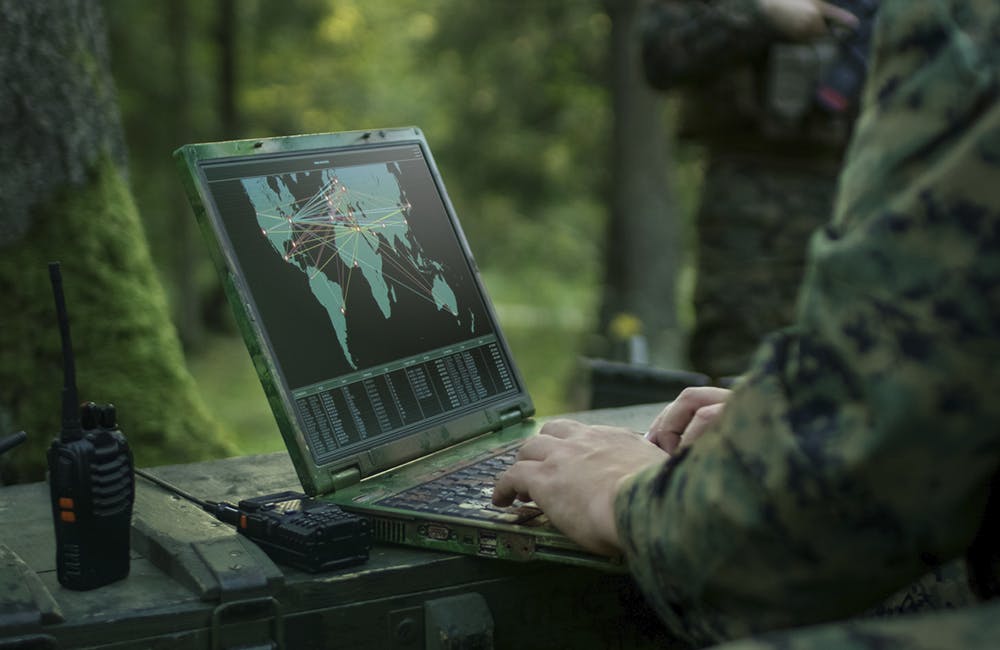How DOD’s Modernization Approach is Shifting Top Tech Priorities
Cross-collaboration and changes to acquisition are key as priorities shift.

Insight into the Defense Department’s recent modernization priorities and impact of the COVID-19 pandemic show focuses on microelectronics and biotechnology. These priorities are unlocking coordinated efforts across agencies within the department, its modernization lead briefed Tuesday.
The agency’s priority areas were outlined in the 2018 National Defense Strategy, and include things like autonomy, cyber, 5G, quantum computing, artificial intelligence and more. DOD has been most focused on microelectronics — electronics that have very small and microscopic elements, said Defense Research and Engineering for Modernization Director Mark Lewis at a virtual event.
5G communications is also a critical priority, as the new generation of telecommunications will bring better data rates, lower latency and a greater volume of data than what DOD currently operates with.
Lewis joined the agency in November 2019 to fill the new role responsible for overseeing modernization in these areas and the assistant directors who oversee each priority area and track overall respective areas of work across DOD at large.
“Each one of those … assistant directors is charged with building first a roadmap that will integrate and evaluate the activities across the services and the departments and provide guidance from where we’d like to see the departments and the services moving forward,” Lewis said. “Those roadmaps look for gaps, they look for overlap, they look for budget balance, they also look for interconnectivity between the services.”
The assistant directors work with each other to consider how each of their technology areas interrelate, creating cross-area collaboration in technological innovation.
“Our assistant director of microelectronics works closely with our assistant director in fully network management control communications, with our cyber system director, with our AI assistant director,” Lewis said. “They red-team each other, evaluate each other.”
Key to pushing these efforts forward is keeping up with the commercial curve in technological acquisition. To do this, DOD is shifting its strategy from the Trusted Foundry Program — a program designed to secure the manufacturing infrastructure for IT vendors providing hardware to DOD — to a “zero trust” model of modernized technological acquisition.
“Our preferred approach is what we call a ‘zero trust,’ enabling the capabilities, validation, verification, other technologies — including the way we handle data — so that we can utilize components that are not coming from trusted foundries, that are coming from places where we haven’t done the full certification, but we know the capabilities that they are delivering are in fact trustworthy,” Lewis said. “Our goal is to allow the Department of Defense to purchase on the commercial curves from the state of the art.”
The new approach to modernizing DOD’s technological priorities and acquisition have two underlying themes, which are to support defense industrial base suppliers and to improve and skill DOD’s own tech workforce to implement modernization priorities across the department, Lewis said.
This is a carousel with manually rotating slides. Use Next and Previous buttons to navigate or jump to a slide with the slide dots
-

Inside DOD’s Push to Grow the Cyber Workforce Through Academia
Diba Hadi gives her first interview since becoming principal director of the DOD’s Cyber Academic Engagement Office.
15m listen -

Agencies Tackle Infrastructure Challenges to Drive AI Adoption
Federal agencies are rethinking data strategies and IT modernization to drive mission impact and operational efficiency as new presidential directives guide next steps.
5m read Partner Content -

Generative AI Demands Federal Workforce Readiness, Officials Say
NASA and DOI outline new generative AI use cases and stress that successful AI adoption depends on strong change management.
6m read -

The Next AI Wave Requires Stronger Cyber Defenses, Data Management
IT officials warn of new vulnerabilities posed by AI as agencies continue to leverage the tech to boost operational efficiency.
5m read -

Federal CIOs Push for ROI-Focused Modernization to Advance Mission Goals
CIOs focus on return on investment, data governance and application modernization to drive mission outcomes as agencies adopt new tech tools.
4m read -

Fed Efficiency Drive Includes Code-Sharing Law, Metahumans
By reusing existing code instead of rewriting it, agencies could dramatically cut costs under the soon-to-be-enacted SHARE IT Act.
5m read -

Agencies Push Data-Driven Acquisition Reforms to Boost Efficiency
New initiatives aim to increase visibility of agency spending, improve data quality and create avenues to deploy solutions across government.
5m read -

Data Transparency Essential to Government Reform, Rep. Sessions Says
Co-Chair of the Congressional DOGE Caucus Rep. Pete Sessions calls for data sharing and partnerships to reduce waste and improve efficiency.
5m read -

DOD Turns to Skills-Based Hiring to Build Next-Gen Cyber Workforce
Mark Gorak discusses DOD’s efforts to build a diverse cyber workforce, including skills-based hiring and partnerships with over 480 schools.
20m listen -

AI Foundations Driving Government Efficiency
Federal agencies are modernizing systems, managing risk and building trust to scale responsible AI and drive government efficiency.
40m watch -

Trump Executive Order Boosts HBCUs Role in Building Federal Tech Workforce
The executive order empowers HBCUs to develop tech talent pipelines and expand access to federal workforce opportunities.
3m read -

Navy Memo Maps Tech Priorities for the Future Fight
Acting CTO’s memo outlines critical investment areas, from AI and quantum to cyber and space, as part of an accelerated modernization push.
5m read
















